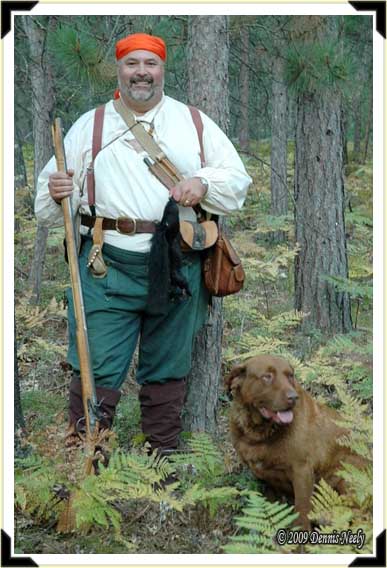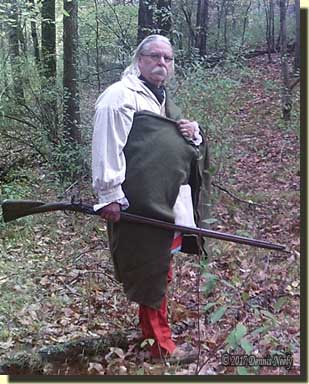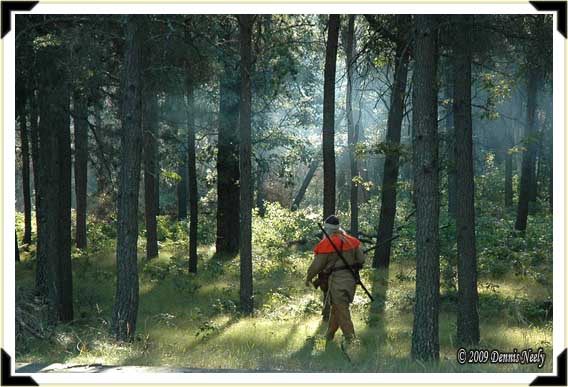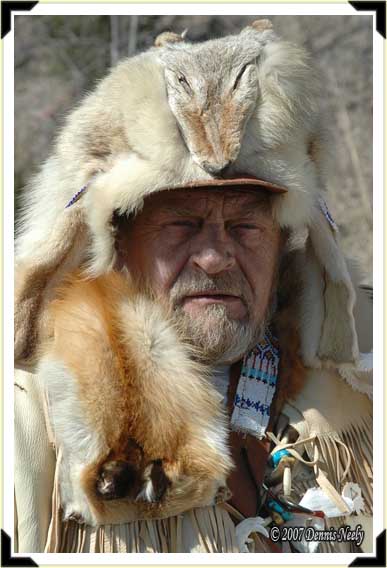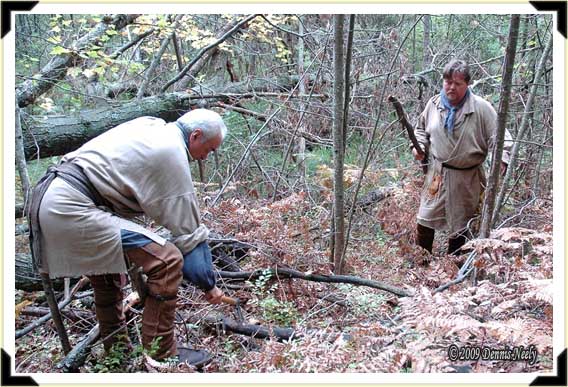-
Recent Posts
Categories
Archives
- November 2020
- October 2020
- September 2020
- August 2020
- July 2020
- June 2020
- May 2020
- April 2020
- April 2019
- March 2019
- February 2019
- January 2019
- December 2018
- November 2018
- October 2018
- September 2018
- August 2018
- July 2018
- June 2018
- May 2018
- April 2018
- March 2018
- February 2018
- January 2018
- December 2017
- November 2017
- October 2017
- September 2017
- August 2017
- July 2017
- June 2017
- May 2017
- April 2017
- March 2017
- February 2017
- January 2017
- December 2016
- November 2016
- October 2016
- September 2016
- August 2016
- July 2016
- June 2016
- May 2016
- April 2016
- March 2016
- February 2016
- January 2016
- December 2015
- November 2015
- October 2015
- September 2015
- August 2015
- July 2015
- June 2015
- May 2015
- April 2015
- March 2015
- February 2015
- January 2015
- December 2014
- November 2014
- October 2014
- September 2014
- August 2014
- July 2014
- June 2014
- May 2014
- April 2014
- March 2014
- February 2014
- January 2014
- December 2013
- November 2013
- October 2013
- September 2013
- August 2013
- July 2013
- June 2013
- May 2013
- April 2013
- March 2013
- February 2013
- January 2013
- December 2012
- November 2012
- October 2012
- September 2012
- August 2012
- July 2012
Blogroll
Forums
General Living History
Historical Sites
Organizations
Artists

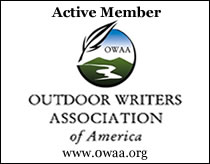
“First Meat”
Posted in Hunting Camps, Snapshot Saturday, Squirrel Hunts
Tagged Black powder hunting, Dennis Neely, historical trekking, Mountain Man, National Muzzle Loading Rifle Association, North West trade gun, Northwest trade gun, trade gun, traditional black powder, traditional black powder hunting, traditional blackpowder, traditional blackpowder hunting, Traditional camping, Traditional Woodsman
1 Comment
“It’s no wonder Mi-ki-naak has amnesia…”
“Cringe-worthy” best described Lt. Lang’s email. The subject line, “Today 1763,” put his message at the top of my “must read list.” I hate to break the news to the modern world, but living history takes precedence over your perceived crisis of the moment. Family comes first, always, but the constant bombardment of hyped triviality does not sway me—I could care less who the next glamorous guest is on some late night talk show. I’ll either be researching or sleeping.
As living historians and traditional black powder hunters, Lt. Lang and I share primary documentation, swap traditional hunting data and information, and we are on a constant lookout for snippets relative to each other’s research. Thus the subject of his email was no surprise, but the content was.
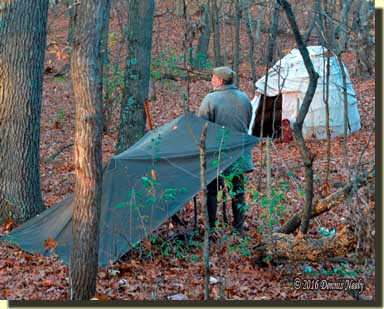
Lt. Lang set up his overnight shelter in the same hollow as Msko-waagosh’s wigwam. From a living historian’s perspective the wigwam is timeless, but the character portrayals are not.
About a year ago, I decided to create a third persona, a returned captive for Darrel’s current bygone era: the fall of 1763. Up until then, we roamed the glade three decades apart. He focused on 1763 and I on 1796. In the field, we each go our separate ways, immersed in a specific history-based scenario. Sometimes we cross paths and sometimes we settle on a rendezvous point where we discuss the events of that morning or afternoon. The time disparity pulls us out of character, at least to some extent.
Along came Mi-ki-naak, the Snapping Turtle. I thought the transition would be smooth, and it has been far from it. I failed to realize how much research I had invested in my trading-post hunter and in Msko-waagosh, which amounts to 40 years of study.
Because nothing exists beyond this moment in a person’s life, what we call “the future,” living historians apply the same restriction to their characters. As a person living, surviving and hunting on a given day two-plus centuries removed from “what is,” my alter ego is unaware of the actual events of tomorrow, what the next week will bring or if he will be around next year, which is 1797. Those happenings are all in the future, and making it through “this day” is all that matters.
That said, the past exists in some form for every person’s life. Because the aforementioned characters center their time-traveling exploits in the Great Lakes region, one would expect they have heard of the defeat of the British garrison stationed at Fort Michilimackinac in June of 1763.
From time to time, I reference the writings of Alexander Henry as primary documentation to support some aspect of my wilderness classroom experiences. I try hard to make sure the passage presents a practical “lessons learned” approach to building a portrayal that is well rounded, believable and authentic. In most cases, a reference to any real player from the past focuses on the hunting experiences of that individual, successful or otherwise.
In everyday usage, the trading-post hunter and Msko-waagosh possess a basic knowledge of the taking of Fort Michilimackinac acquired through oral history recitations of others. That is a reasonable expectation, considering these portrayals exist in the mid-1790s, thirty years after the deception.
However, that caveat is not and should not be the case with the third character, Mi-ki-naak who hunts near the headwaters of the River Raisin in the fall of 1763. Pontiac’s Rebellion is raging all through the region at that very juncture in time!
During the last four weeks the modern world’s demands have consumed every waking minute—most of that time has been dedicated to resolving issues set aside “for the future” last year. Smothered with a “to do list” that I swear spawns at night, Darrel’s email that passed on a posting on social media, at least on the surface, appeared to be a welcomed respite.
Then I opened the message and read the first line: “A storm was brewing at Michilimackinac…” The posting quoted Alexander Henry’s journal, starting with the visit by Wawatam who tried to convince Henry to leave the fort immediately and travel to the Sault (Henry, 74 – 76).
As I read, I cringed. This was a huge blunder on my part, because in all the hubbub of the modern world, my new alter ego, Mi-ki-naak, failed to recall the significance of that day in his life. And therein was the difference: this new character was based on a year of steady research, unlike the other two. The poor Snapping Turtle doesn’t even have a complete set of woodland attire… “Patience, Grasshopper, patience…” I told myself between deep, cleansing breaths. “This too will pass, this too will pass…”
A 1763 event timeline is in order, but that will have to wait until July. Alexander Henry’s journal is packed for Friendship, with hopes of reconnecting with his ordeal, but with the schedule for that visit, I doubt that I will get any time to read. Yes, that was a big sigh you heard. Oh, and I just received another “urgent email,” the third in the last twenty minutes, that requires an immediate response. It’s no wonder Mi-ki-naak has amnesia…
Give traditional black powder hunting a try, be safe and may God bless you.
Posted in Clothing & Accoutrements, Hunting Camps, Living History
Tagged Black powder hunting, Dennis Neely, French fusil, French Fusil de Chasse, National Muzzle Loading Rifle Association, North West trade gun, Northwest trade gun, trade gun, traditional black powder, traditional blackpowder, traditional blackpowder hunting, Traditional camping, Traditional Woodsman
2 Comments
Traditional Outdoors Podcast
Steve Angell and Nick Viau offer a unique approach to preserving outdoor traditions through modern podcasts. These two traditionalists present a weekly radio show online. Unlike live, over-the-air broadcasts that require tuning in at a specific time and day, the podcast genre allows an individual to listen to a traditions-oriented discussion at any time—even start a podcast segment one day and finish it a few days later.
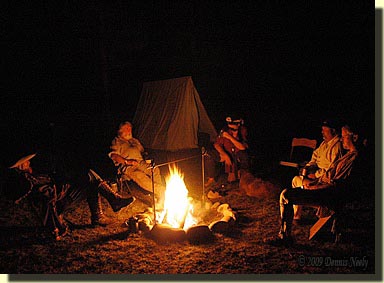 This past week I had the pleasure of being a guest on TraditionalOutdoors.com, their podcast site. Beyond an emphasis on family-oriented discussion and common decency, the ground rules were simple—there were none. Nick and Steve made me feel comfortable and relaxed from the start, the questions and responses were unscripted and all three of us had a whole heap of fun. Like most “campfire conversations,” the topics shifted back and forth. Answers generated questions that took the thought process in many unexpected directions. And we enjoyed ourselves so much we kept talking long after the audio recorders were turned off.
This past week I had the pleasure of being a guest on TraditionalOutdoors.com, their podcast site. Beyond an emphasis on family-oriented discussion and common decency, the ground rules were simple—there were none. Nick and Steve made me feel comfortable and relaxed from the start, the questions and responses were unscripted and all three of us had a whole heap of fun. Like most “campfire conversations,” the topics shifted back and forth. Answers generated questions that took the thought process in many unexpected directions. And we enjoyed ourselves so much we kept talking long after the audio recorders were turned off.
Please set aside some time to delve into the Traditional Outdoors web site, and especially listen to our discussion about traditional black powder hunting!
Check out other traditional outdoor sites, be safe and may God bless you.
Posted in General, Worth thinking about...
Tagged Black powder hunting, Dennis Neely, French fusil, French Fusil de Chasse, historical trekking, Mountain Man, National Muzzle Loading Rifle Association, Native captive, North West trade gun, Northwest trade gun, trade gun, traditional black powder, traditional black powder hunting, traditional blackpowder, traditional blackpowder hunting, Traditional camping, Traditional Woodsman
Comments Off on Traditional Outdoors Podcast
“In Pursuit of Partridge”
“Snapshot Saturday”
Posted in Hunting Camps, Snapshot Saturday
Tagged Black powder hunting, Dennis Neely, historical trekking, Mountain Man, National Muzzle Loading Rifle Association, North West trade gun, Northwest trade gun, trade gun, traditional black powder hunting, traditional blackpowder, traditional blackpowder hunting, Traditional camping, Traditional Woodsman
Comments Off on “In Pursuit of Partridge”
“The Winterer”
“Snapshot Saturday”
Posted in Persona, Snapshot Saturday
Tagged Black powder hunting, Dennis Neely, historical trekking, Mountain Man, National Muzzle Loading Rifle Association, North West trade gun, Northwest trade gun, trade gun, traditional black powder, traditional black powder hunting, traditional blackpowder, traditional blackpowder hunting, Traditional Woodsman
Comments Off on “The Winterer”
“Defending the Fort”
“Snapshot Saturday”
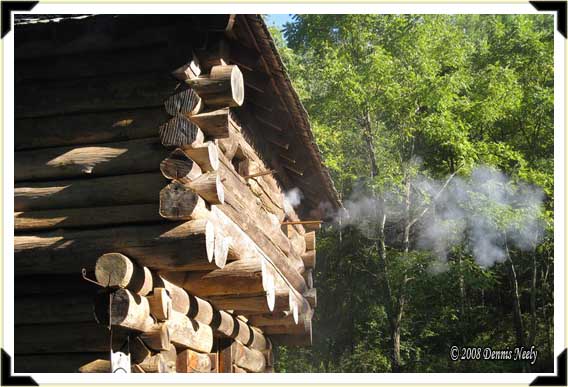
Thick, white smoke flared from Old Turkey Feathers’ muzzle. The death sphere struck a British soldier mid-chest. Msko-waagosh scrambled to his feet, stepped to the right and grasped his powder horn. A settler homesteading near the log fort poked his rifle through the scant opening and took careful aim. The skirmish lasted all of five minutes… Old Northwest Territory, south of Laughery Creek, in the Year of our Lord, 1795…
Posted in Living History, Scenarios, Snapshot Saturday
Tagged Black powder hunting, Dennis Neely, historical trekking, National Muzzle Loading Rifle Association, Native captive, North West trade gun, Northwest trade gun, trade gun, traditional black powder, traditional black powder hunting, traditional blackpowder, traditional blackpowder hunting, Traditional Woodsman
Comments Off on “Defending the Fort”
Oh, if it was only that easy!
Sun rays illuminated a rising mosquito. Grayish tan wings, longer than its body, blurred. Blood sucking mixed with a striking, natural beauty, this tiny creature of misery flitted up-and-down, back-and-forth with enchanting grace. Another drifted about, coming and going along a blue wool leggin. Still another buzzed and hovered near the woodsman’s left ear.
Two needle-beaked wonders tried to alight on bare skin, but instead flew down to a wet cowhide moccasin. The torturous onslaught demanded a swat, yet the thought of a wild turkey gobbler glimpsing such quick motion quelled that idea. Brisk puffs of breath from pursed lips shooed the beasties back. Some moved on, while others persisted. Ah, the torment of the forest…
Spider webs shimmered on that calm May morning in the Year of our Lord, 1796. Silvery dew drops shimmered as the rising sun’s spears pierced the cedar trees and hardwoods. Shadows skulked hinter and yon.
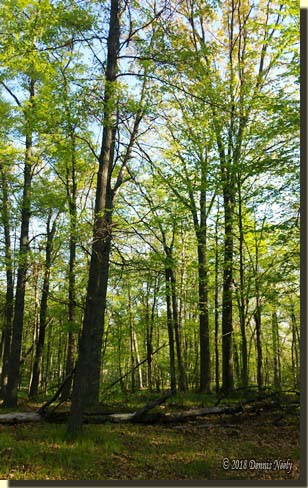 A king bird warbled. A downy woodpecker rat-a-tat-a-tatted. Two wood ducks flew over, banked in unison, then veered to the west and the sanctity of the River Raisin. A mosquito landed on the returned captive’s chin. A twitch and two puffs dislodge it and drove it away. A single goose ke-honked. A bullfrog croaked, deep and loud. The king bird sang and sang.
A king bird warbled. A downy woodpecker rat-a-tat-a-tatted. Two wood ducks flew over, banked in unison, then veered to the west and the sanctity of the River Raisin. A mosquito landed on the returned captive’s chin. A twitch and two puffs dislodge it and drove it away. A single goose ke-honked. A bullfrog croaked, deep and loud. The king bird sang and sang.
A small white spider’s nimble legs crept over a band turned on the Northwest gun’s browned barrel. From whence it came Msko-waagosh, the Red Fox, did not know. Several geese disagreed near the lily-pad flats of the Raisin. The white spider marched along the ridge where the forestock touched the round barrel.
A lone white-tailed deer walked through a green patch of skunk cabbage, its fore legs black with wet muck to the knees, the back legs muddy halfway to the hock. A fox squirrel barked in a scolding tone. Two deer ears popped up at the juncture of a greening opening and last summer’s tawny, dry bent-over cattails. Both deer meandered toward the same secluded point of land in the river bottom.
The fox squirrel settled into a slow, contented chatter as it perched on a crooked maple limb that arched out over the clearing. Buds lined that tree’s twigs and branches, late by two weeks due to a cold April.
The woodsman held his right hand to his mouth, then clucked twice, “Ark, ark…” No answer. Minutes later a mosquito landed on the back of a finger, set back on his wispy legs and prepared to drill. A slow, sideways slide of that same right hand crushed that wanton attack.
Three geese flew low over the huckleberry swamp. The middle bird dropped its black head, eyed right to left, then returned its attention to the business of keeping up with the other two. The steady wing beats uttered hushed, rhythmic swishes, but like the turkeys the geese remained silent…
Another Step Back in Time…
Narrative passages sometimes bounce about the mind’s inner sanctum long after conscious reading. Before this year’s gobbler season began, I worked on what started out as a simple blog post dealing with wing bone turkey calls. The writing took on a life of its own; a handful of paragraphs grew into four separate documents, which unfortunately are still awaiting completion.
A part of the background documentation led me to the eloquent words of Joseph Doddridge. I believe all living historians have “pet passages” that strike their fancy. Such missives recur time and again within the context of a character portrayal, either as a spoken statement of first-person reality or as a guiding light for 18th-century actions. As a traditional black powder hunter, Doddridge’s “…imitating the noise of every bird and beast…” is such a passage:
“One important pastime of our boys was that of imitating the noise of every bird and beast in the woods. This faculty was not merely a pastime, but a very necessary part of education, on account of its utility in certain circumstances. The imitation of the gobbling and other sounds of wild turkeys often brought those keen eyed and ever watchful tenants of the forest within the reach of the rifle. The bleating of the fawn brought her dam to her death in the same way…” (Doddridge, 122)
One of my personas, the hired hunter for a backcountry trading post, hasn’t seen much field time in the past couple of years. That said, he, too, relies on Doddridge’s educational tutelage, along with several passages from Meshach Browning’s narrative, Forty-Four Years of the Life of a Hunter. At one point Browning sums up the essence of spring gobbler hunting in one sentence. Oh, if it was only this easy:
“…I walked fast, and presently heard a turkey gobbler, when I imitated the cackle of a hen turkey, and as he came running to find her, I shot him.” (Browning, 229)
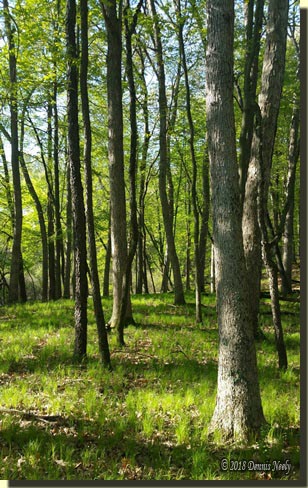 On that calm May morning in 1796, Msko-waagosh, the returned captive persona, took a conscious moccasin step in the direction of a more meaningful portrayal: he left his single wing bone call in his shot pouch and used his mouth to imitate the soft, seductive cackle of a hen turkey beckoning a spring lover.
On that calm May morning in 1796, Msko-waagosh, the returned captive persona, took a conscious moccasin step in the direction of a more meaningful portrayal: he left his single wing bone call in his shot pouch and used his mouth to imitate the soft, seductive cackle of a hen turkey beckoning a spring lover.
For the life of me, I don’t know why I haven’t tried this before. Nothing is ever lost with any lesson in the wilderness classroom. Even failure is gain. As Doddridge says, imitating the noise of every bird and beast was a pastime. Why not learn as they did?
A mix of cultures exists in this action, in that the documentation for using the wing bone possesses Native American origins. That said there is ample implied evidence to support an individual who was raised by an adoptive Ojibwe family using his mouth to imitate the noise of a wild turkey.
C. B. Allman’s narrative, The Life and Times of Lewis Wetzel, relates the dark tale of the “Gobbler Indian.” Lewis Wetzel describes his preparations for this January, 12, 1783 “hunt.” In the build up to the finale, he states:
“…In a little while my call was answered and presently a large Indian came in sight and was leaning down and going to and fro, as if hunting a trail. I kept calling; he answered and came on towards me…” (Allman, 124)
And reading on in Doddridge, he makes similar comments when he writes:
“…The Indians, when scattered about in a neighborhood, often collected together by imitating turkeys by day and wolves or owls by night…” (Doddridge, 123)
Over the past decade the habits of the turkeys on the North-Forty have changed. The explanation for these changes is complicated and not needed for this post. Two-year-old gobblers are both call and decoy shy. The rampant coyote population has caused the birds to go silent on the ground, save for soft clicks, clucks and putts when the birds get close to each other.
Strings of yelps like those presented on modern call makers’ videos serve only to alert our turkeys to the grim reaper’s location. About eight years ago, a hunter on the adjacent property to the south unleashed a series of clucks, putts and purrs. A fallen maple’s root ball, in the River Raisin’s thick bottom land a couple hundred yards downstream, sheltered the post hunter’s deathly shape that morning.
Not five minutes after the first utterances, this woodsman’s eyes caught movement. A hen with her head down skulked through the skunk cabbage. Another followed, and then came a jake, all moving away from the caller. The lesson of that 18th-century morning confirmed what my alter ego suspected.
The toms are still hanging with the hens, just as the spring leafing of the trees is two weeks behind. When a woodland survival tactic does not produce a meal, a quick change is in order. The wing bone call is not working, so there is little lost attempting to imitate the noise of this elusive game bird. Perhaps Msko-waagosh will stumble upon the same enchanting tones used by Meshach Browning, and a turkey gobbler will come running to find the mysterious hen. Oh, if it was only that easy!
Give traditional black powder hunting a try, be safe and may God bless you.
Posted in Persona, Skills, Turkey Hunts
Tagged Black powder hunting, Dennis Neely, historical trekking, Mountain Man, National Muzzle Loading Rifle Association, Native captive, North West trade gun, Northwest trade gun, trade gun, traditional black powder, traditional black powder hunting, traditional blackpowder, traditional blackpowder hunting, Traditional camping, Traditional Woodsman
Comments Off on Oh, if it was only that easy!
“Evening Firewood”
“Snapshot Saturday”
Posted in Hunting Camps, Snapshot Saturday
Tagged Black powder hunting, Dennis Neely, historical trekking, Mountain Man, National Muzzle Loading Rifle Association, North West trade gun, Northwest trade gun, trade gun, traditional black powder hunting, traditional blackpowder, traditional blackpowder hunting, Traditional camping, Traditional Woodsman
Comments Off on “Evening Firewood”

